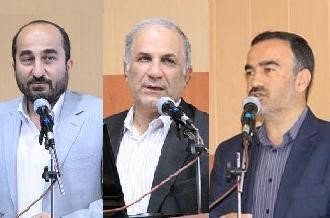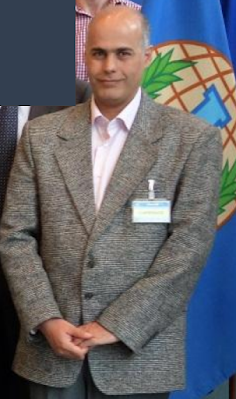Heavy Metal in Tehran
I’m
told that one of the hardest things to do when making nuclear weapons is metallurgy
– getting the fissile material ‘pit’[1] that sits at the heart of
the bomb just right. You don’t want your pit to be contaminated by other materials,
nor for it to be brittle or aerated – they’re all things that cause nukes to fizzle[2] rather than bang.
If
Iran wants to produce nuclear weapons, getting metallurgical aspects of its
fissile material right is a hurdle that it needs to overcome. And it’s not entirely
clear how much work Iran has already done in this area. The Atomic Energy
Organisation of Iran has admitted[3] to the IAEA that it conducted
experiments in producing uranium metal from Chinese-origin uranium
tetrafluoride. Helpfully, we also know from the IAEA that the pre-2004 ‘AMAD’ nuclear
weapons development organisation had a ‘uranium
metallurgy project’[4]
(dang, I wonder what they were working on?), and, given that AMAD ran for
at least four years, it’s not a great leap of logic to assume that this group
made at least some progress on the metallurgy front. Nor is it a great leap to
assume that the AMAD folks got hold of the Uranium Metallurgy for Dummies guide
that Iran has admitted[5] receiving from AQ Khan – the
Pakistani-origin blueprint for how to cast uranium hemispheres for nuclear
weapon pits.
There’re
still plenty of questions about these past activities. But given the importance
of metallurgy as a critical point on the pathway to Iran producing nuclear
weapons, I find Iran’s potential future work in this area a much more
interesting thing to consider – and I think that the most likely players who
could be involved in this activity are a bunch of characters well worth
checking out. Hence this post.
The
Metallurgy Dream Team
Picture
this: it’s 2015, and the Supreme Leader has finally green-lighted the production
of nuclear weapons. You’ve been charged with bringing together a small team of
scientists who will take Iran’s highly‑enriched uranium hexafluoride gas,
convert it to uranium metal, and fashion a set of pits for nuclear weapons
(Yes, you’re just
like[6] Samuel L Jackson in the Avengers! But
please take off that eyepatch.) You’ve got a month to get it done. And those
pits better work.
How
are you going to play it?
Me,
I’d probably shoot off out of there and get on the first plane to New Zealand
to sit out the global apocalypse. But if you’re a bit bolder, I think you’d
look for a group of people with two characteristics:
- Demonstrated metallurgical
expertise in uranium or substitute materials; and
- A strong affiliation with trusted
military research entities or the IRGC (we
can’t trust just anyone to transform our hard-earned enriched uranium hexafluoride
into pits).
Helpfully,
there’s more than enough information out there in Iran’s published scientific
literature for us to discern that there is a fairly small cadre of personnel in
Iran who fulfil exactly these criteria. These are the people, I’ll bet,
who’ll make up at least part of the metallurgy crew when Iran starts producing
weapons.
Don’t
want to trawl the academic papers to find out who they are? Fine – let me help
you out with your guaranteed number one draft pick for the U Metal Dream Team,
before getting onto some of my other top draftees:
Dr Hadavi[7] is a particularly
interesting cat. Just to give you some idea of the kind of military-affiliated
circles that he moves in, that’s Hadavi pictured at some sort of Iranian TED
talk (or possibly karaoke session) with Dr Mohammad
Mehdinejad-Nouri[8] (محمد مهدینژاد نوری), who was sanctioned by the UN for
doing dodgy nuclear weapon‑related experiments with beryllium[9] and for heading MODAFL’s
Malek Ashtar University; and also Ali Reza Rahai (علیرضا رهائی), who is president[10] of the Amir Kabir University
(which has been sanctioned by Australia for being generally suspect). Hadavi
has also held[11] a senior position in MODAFL’s
Aviation Industries Organisation, and presumably has some good ideas about making
pointy things fly. So his military connections are pretty strong.
How
about Hadavi’s metallurgical abilities?
Imagine
yourself as a hypothetical AMAD metallurgist (your name: S Hadavi. No wait!
That’s too obvious – Seyyed H.) twiddling your thumbs and waiting for the jokers
in AMAD’s green
salt uranium conversion project[12] to get their act together
and make you some actual uranium metal to play with. What would you do in the meantime? Maybe
produce some tungsten spheres to act as substitutes for uranium metal pits for AMAD’s
simulated nuclear implosions?
Sounds
like a good idea, Seyyed. And if your balls were as big
and heavy[13] as the tungsten ones you’d
cooked up in the furnace for AMAD, after that particular line of research was
put on ice by the Supreme Leader as part of his late‑2003 halt order, you could
probably even get a published
research paper[14] out of it. Hadavi did:
You’ll
note the research affiliations of Hadavi and his co-authors in this paper – something
called the Advanced Materials and Technology Research Centre, or AMTRC. That
particular organisation has been outed
by the IAEA[15] as part of Mohsen
Fakhrizadeh’s military nuclear research program, so this research is either
AMAD work or something from one of AMAD’s later incarnations. Seriously, how mental
is Hadavi for putting this paper out into the public domain?
(Creep
forming – that’s presumably a bit like me[17] on a Saturday night.) You’ll
note of course that 7075 aluminium alloy is exactly the sort of material that
Iran uses for key parts of its IR‑1 centrifuges for uranium enrichment – 7075
is a specialised high‑strength aluminium used for making the spinning rotors
inside these machines. I’m willing to call this paper out as part of Iran’s
uranium enrichment R&D, cos it sure ain’t for making mountain bikes.
So Hadavi
is captain of our metallurgy team. And actually, why not let Hadavi pick out
the rest of his crew? As his open source academic publication record shows, Hadavi’s
clearly already got some skilled colleagues who could crew our nuclear weapons uranium
metal pit foundry (which I like to imagine would look a bit like this[18]). They are:
Naser Ehsani Ghomeishlui (ناصر احسانی قمیشلوئی)
Accused[19] by the NCRI of working with
Mohsen Fakhrizadeh on beryllium production for nuclear weapon tampers[20]. Studied engineering at
the University of New South Wales[21] at the same time as Hadavi
did, and is on at least one academic review
board[22] alongside Hadavi – so they’re
more than likely very old pals. Faculty
member[23] of MODAFL’s Malek Ashtar
University. Has published research on isostatic
hot press technology[24] and casting
metal matrixes[25] – pretty handy stuff for forming
nuclear weapon pits. And despite his curmudgeonly appearance, has never been
seen in the same room as grumpy
cat[26].
A
Hadavi co-author in the AMAD tungsten paper[27]. Member of the AMTRC
organisation. Online
broker[28] of tungsten (yep, check the link)
and other specialty metals. Probably a bit short on cash, so should be willing
to sign up to join Team Metal.
Another[29] AMTRC member and tungsten research
participant. Goes by the name H. Enormous, according to Google Translate – so a
pretty popular guy in the foundry steam room, I imagine?
A co-author[30] of Hadavi from other suspect
Malek Ashtar University research. Apparently a ‘Master of welding’. Is shamelessly
seeking[31] consulting work in
metallurgy. Let’s hire him!
Yet
another Hadavi buddy[32]. Actually seems to know a fair
bit about metallurgy and has an actual
proper job[33] at the Iran University of
Science and Technology – so doesn’t have to resort to pimping for consulting work
on eforosh.com (yet).
That
looks like a pretty decent crew to get started with.
One
more thing. Maybe we should bring in someone from the Atomic Energy Organisation
of Iran as well? After all, they’re the ones who’ll most likely be bringing the
uranium hexafluoride to the party[34] – and consequently, they’ll
probably want to share in our glory.
I’d
pick:
Dr Mohammad Ghannadi-Maragheh
(محمد قنادی مراغه)
Ghannadi[35] has the right skills for the
job, so far as I can tell. Military connections – check. Metallurgical
experience: Yep. Let me list some of his research specialities, as described in
his publications from various journals:
- Uranium dioxide powder (see Environmental
Science and Technology 43(6) (2009))
- Fluidized bed reactors (see Majallah-I
Olum va Fanoon-I Hasteh-I 43 (2008))
- Uranium(VI) reduction to uranium(IV)
(see Scientific Bulletin of the Atomic Energy Organisation of Iran 20
(2000))
- Determination of uranium
enrichment using X-rays and gamma rays (see Scientific Bulletin of the
Atomic Energy Organisation of Iran 15 (1998))
Not a
perfect metallurgist’s skill-set, but more than appropriate for the purposes of
our little pit project.
Put
these eight people together, add a couple of work experience kids to clean out
the dirty gloveboxes, and with that sort of metallurgical crew we might just be
able to deliver a few good pits to Khamenei and the IRGC before we all get buried
by the B-2 strikes.
Those
are my picks. So who’s on your team?
[1] http://en.wikipedia.org/wiki/Pit_(nuclear_weapon)
[2] http://en.wikipedia.org/wiki/Fizzle_(nuclear_test)
[3] http://www.iaea.org/Publications/Documents/Board/2011/gov2011-65.pdf
[4] http://www.iaea.org/Publications/Documents/Board/2011/gov2011-65.pdf
[5] http://www.iaea.org/Publications/Documents/Board/2011/gov2011-65.pdf
[6] http://assets.diylol.com/hfs/105/51e/232/resized/samuel-l-jackson-in-a-motherfucking-eye-patch-meme-generator-samuel-l-jackson-in-a-motherfucking-eye-patch-02e876.jpg?1313598123.jpg
[7] http://www.snn.ir/NSite/FullStory/News/?id=195380&Serv=3&SGr=10
[8] http://www.msrt.ir/sites/Vezarati/Lists/test/AllItems.aspx
[9] http://en.wikipedia.org/wiki/Neutron_reflector
[10] http://aut.ac.ir/www/aut/main/?f=p0&s=president&l=1
[11] http://www.snn.ir/NSite/FullStory/News/?id=195380&Serv=3&SGr=10
[12] http://www.guardian.co.uk/world/julian-borger-global-security-blog/2009/nov/17/iran-nuclear-weapons1
[13] http://www.youtube.com/watch?v=_W-fIn2QZgg
(please check this mark)
[14] http://www.civilica.com/Paper-CIMS08-CIMS08_178.html
[15] http://www.iaea.org/Publications/Documents/Board/2011/gov2011-65.pdf
[16] http://journals.ohiolink.edu/ejc/article.cgi?issn=09215093&issue=v528i29-30&article=8795_eotatoaasamp
[17] http://9gag.com/gag/5205441
[18] http://www.youtube.com/watch?v=iclwKaci3MI
[19] http://static.tijd.be/pdf/iran_nuclear.pdf
[20] http://en.wikipedia.org/wiki/Nuclear_weapon_design
[21] http://link.springer.com/content/pdf/10.1007/978-1-4615-5393-9_46.pdf
[22] http://www.isaem.ir/printme.php?item=1.85.15.fa
[23] http://www.icers.org/portal/index.php?option=com_content&task=view&id=108&Itemid=1
[24] http://books.google.co.uk/books/about/Processing_of_Composite_and_Monolithic_H.html?id=P6jHtgAACAAJ&redir_esc=y
[25] http://www.civilica.com/Paper-IMES01-IMES01_186.html
[26] http://www.grumpycats.com/
[27] http://www.civilica.com/Paper-CIMS08-CIMS08_178.html
[28] https://eforosh.com/industry/149/76320/2129224
[29] http://www.civilica.com/Paper-CIMS08-CIMS08_178.html
[30] http://www.civilica.com/Paper-IMES01-IMES01_144.html
[31] http://www.boorsekala.com/gad/11/324/112751/%D9%81%D8%B1%D8%A7%D9%85%D8%B1%D8%B2
%D8%B9%D8%A7%D8%AF%D9%84%D9%8A/
[32] http://www.civilica.com/Paper-ICME08-ICME08_081.html
[33] http://www.iust.ac.ir/find.php?item=29.5125.8212.fa
[34] http://www.youtube.com/watch?v=EaqQhdt1qqk
[35] http://www.irna.ir/fa/News/80609243/%D8%A7%D8%B3%D8%AA%D8%A7%D9%86%D9%87%D8%A7/%D9%85%D8%B9%D8%A7%D9%88%D9%86_%D8%B3%D8%A7%D8%B2%D9%85%D8%A7%D9%86_%D8%A7%D9%86%D8%B1%DA%98%DB%8C_%D8%A7%D8%AA%D9%85%DB%8C__%D8%B3%D9%88%D8%AE%D8%AA_%D8%B1%D8%A7%DA%A9%D8%AA%D













Comments
Post a Comment